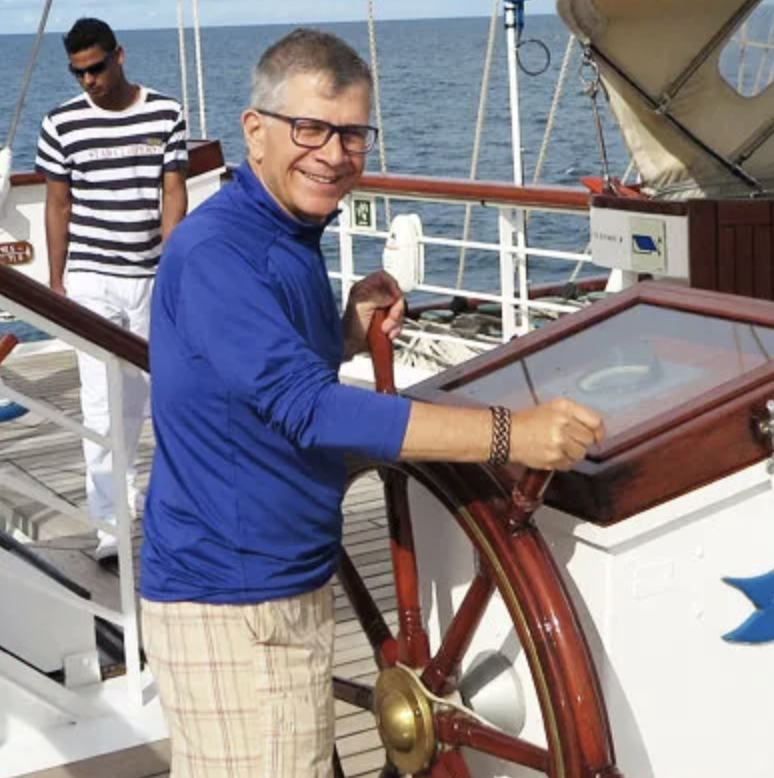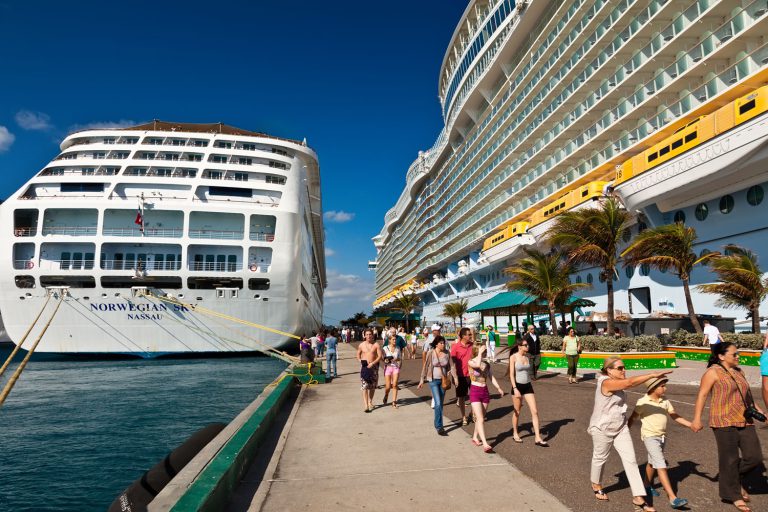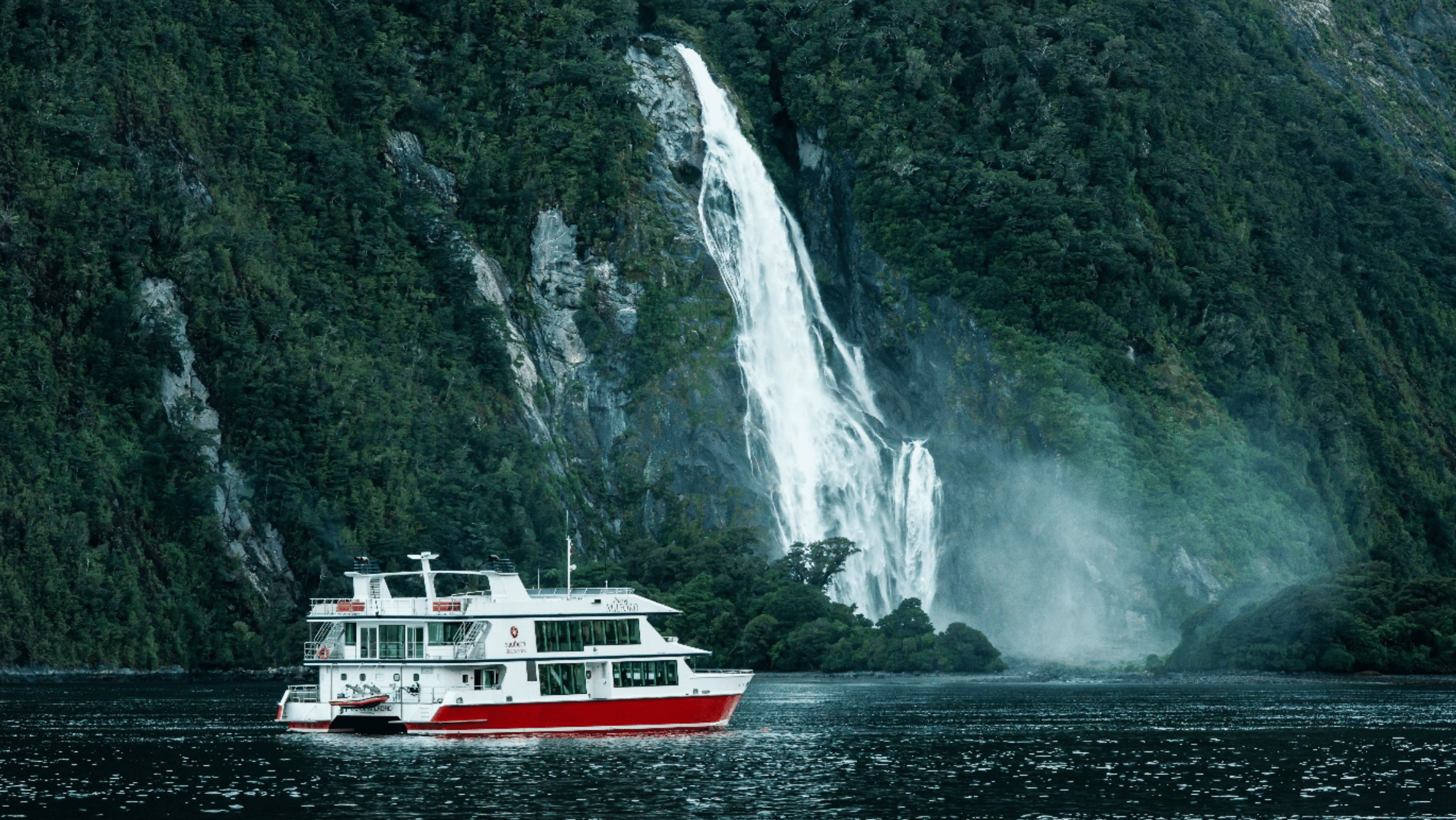Go to any dinner party a decade ago, and at least half the table would loudly vow they would never take a cruise holiday.
All that changed when cruise lines created ships with amazing food, sensational entertainment and stunning service that sailed to the most desirable destinations on earth.
Suddenly, even the nay-sayers wanted to know what cruising was all about.
These past few weeks, however, have seen events that put a question mark over the progress that has come from all that hard work.
Protests in Venice and Kiel. Moves to limit cruise ship numbers in many towns and cities from Bergen to Barcelona, because residents complain their daily lives are being disrupted.
Even locally, residents from Tasmania to Kangaroo Island are questioning the benefits of playing host to those aboard cruise ships.
And while some in the industry have their heads in the sand, believing it will all go away, the truth is it is likely to get worse unless something is done.
There are 133 ships currently under construction in yards around the world. And 73 of them will carry over 1,000 passengers. Twenty-one will take on board 5000 guests and another almost 2,000 crew. They will join the 272 ships already on the water.
Thankfully, most executives in charge of an industry going through a rapid growth phase see how easy it would be to kill the goose that lays the golden egg.
High spending cruise passengers want authentic experiences on shore as well as great food and shows at sea. Without welcoming destinations, cruise ships will be reduced to floating resorts.
And while, if you’re an accountant, it makes sense to build vessels bigger so you get the economies of scale, it doesn’t necessarily make for a more pleasant experience for passengers or those on shore.
To give you some idea of the scale of the problem, the little town of Hoonah in Alaska is expecting 267,000 passengers off cruise ships this season – a record for this beautiful landscape which has nature as its key selling point. A second dock will drive those numbers up to 400,000.
Yet Hoonah has a population of just 800. And residents are forking out $1.4 million to increase the size of their footpaths so they can walk down their own streets.
Of course, the huge increase in tourism numbers is not entirely due to cruise. The rise of the middle class in China and India and cheap air fares have meant millions more want to tick off the sites on their personal bucket lists.
But, often unfairly, cruise has become the visible embodiment of overtourism.
So in a week that has seen some very public demonstrations against big ships, what is a devoted fan to do?
What you can do about it
Firstly, don’t stop cruising. It’s a wonderful way to see the world and the huge diversity of destinations mean there are many places ready to welcome you and your ship with open arms.
Secondly, choose your cruise with care. Talk to your accredited travel agent about the holiday you want, and make sure you know you’ll be welcome when you get to your destination. We hope reputable agencies will be training staff on alternatives like those in our piece on Mediterranean ports.
Thirdly, support efforts by the likes of Cruise Lines International Association Australasia, who are doing good work bringing local governments together with cruise lines to schedule arrivals and prepare the way.
Consider cruise lines who are working with communities on shore to find ways local businesses can benefit.
And push governments to create sensible sustainable plans where you can.
Venice is a case in point. The people, the cruise lines and the government agree big ships should be anchored outside the city. A Cruise Passenger poll last week showed almost 100% of passengers think so too.
So all we need now is for the Italian government to make it happen.
Click here to find out how the cruise lines are fighting back and how travel consultants at Bicton Travel are advising concerned travellers.










I have just reviewed the various comments regarding ships sizes, overcrowded ports and tipping. It just goes to show that you can’t please all the people all the time.
My wife and I have experienced over 30 cruises and we love to cruise. Our experience on larger ships, 5,000 passengers was brilliant, only queued for production show tickets, plenty of room and seating for everyone. The ships are modern and cater for the masses very well. We always struggle on the 2,000 passenger ships for deck chair seating around the pool areas and on promenade deck. The buffet seating is a struggle at lunch and breakfast, not so on larger ships. We only tip at the end of a cruise and only on a deserving basis. Overcrowding only seems a problem at smaller ports, New Zealand, Alaska,South pacific where tourists outnumber residents but in Europe, Asia, Australia, Canada and the States we blend in and go unnoticed because of their huge populations. I still believe cruising is the most economical holiday one can take and intend to keep seeing the world knowing I have a safe bed and good food to come back to after a days sight seeing.
Having been cruising on/off since 1971, the changes in ship sizes and amenities have been enormous. Quite obviously there was need for improvement over those years, however looking at how many ships are on our oceans and the number of newbuilds that are coming on, it is obvious that we are reaching, if not already have, a tipping point of over supply of ships and passenger/tourists. It has become harder to find a cruise/ship that suits what I want to do. I am trying a river cruise through Europe for the first time in 2020. I will be interested to see how that shapes up as it also appears to be getting busy.
I agree with Frank’s comments regarding ship sizes. We did a dual cruise trip recently – the first vessel had less than 2,000 passengers while second behemoth carried over 3,000. The difference was immediately noticeable. Just about every area of the ship was crowded. Walking around during the day – people everywhere and don’t forget the crew. This larger ship had a lot more crew – understandably to manage all of those passengers.
I refuse to get on one of those huge ships again. 2,000 passengers is the maximum for me. That’s if I ever get on one again????
Stop wingeing about tourist crowds it keeps your town alive and prosperous. If you don’t want the ships then send them to sail out of Fremantle and other Australian Ports. For lots of people the fun is the cruising not the port visit.
The Nova virus artical cross -contamination
is a BIG culprit..
I cringe when I see in any land or sea
dining areas staff wiping seats (loaded with
e-coli) then wiping the tables. ..
and no dought when cleaning the cabins they
use the same cloth ..
I have politely mentioned it staff but they
just smile not aknowledging it.
“SOAP!! and Water to wash hands not just
quickly wetting them & drying I have seen
lots of people guilty of that..
On a Mediterranean cruise found the ports around Italy had 4 or 5 Big, 4000 passenger ships tied up. Which meant when you went ashore there were about 10,000 people all wanting to see the same things. Huge queues to the Gallery in Florence, St Peters in Rome, The Leaning Tower, St Marks in Venice. No way.
And big ships can mean a lot of walking if you’re not very mobile. In future I will be looking for a smaller ship.
And I think the 100% surcharge for solos is cruel.
we love cruising and are in octobrer will do our 27 th cruise we don’t think people should tip until then end of cruise then the staff give everone a good cruise but if people tip early things change and they arnt as good to the other people we always tip on the last night and we only cruise with princess it is up to a;ll passengers to choose what inters them
Agree 100% re your remarks about tipping. It annoys me no end that you are expected to fork out considerably extra on top of what you have already paid / budgeted for. Compulsory tipping does not improve service. Like welfare, when just continually handed out it becomes considered the norm and people forget what the true purpose of it was in the first place.
I’ve just completed two cruises, one from Singapore to Southampton and another from Southampton around the British Isles back to Southampton.
Yes, towns are at the mercy of thousands of tourists, but most rely on the expenditure to survive.
What no doubt needs to happen is better scheduling so that three ships – as was the case at Malta – are not in port at the same time. Getting a bus was a nightmare because the tourist buses simply couldn’t cope with the number of people. Queues were annoying, especially at the few women’s toilets.
Rationalising the numbers could be done with a touch of planning and coordination between cruise lines.
Don’t get me wrong, I think the “concept” of cruising is great, but for us the novelty wore off after only two 14 day cruises (Indonesian Ports and the Mediterranean). Why? Those things we loved were offset by those we didn’t and mostly commercialism. We loved the shipboard aspects such as the meals, lazing around the pool, deck walks and generally the entertainment, we mostly liked the organised tours, people interaction and the Hospitality of the crew. However we loathed the “in your face” commercial aspects (art shows, constant photograph intrusions), and the fact that “tipping” was considered the norm. As an Australian, the”tipping” regime was something we opted out of because the “cruise Lines wages policy was nothing to do with us and we only reward people for going above and beyond doing their jobs. The suggestion that all the crew “share in the reward” just goes against the grain and doesn’t (in our view) promote any incentive to go the extra yards. We definitely had a better on-board experience on the 65000 tonne displacement ship than the mega 105 tonne displaced vessel, so if we ever do get that “cruising urge” again, we will be avoiding the “mega market”. Bon-voyage, we have better things to do.